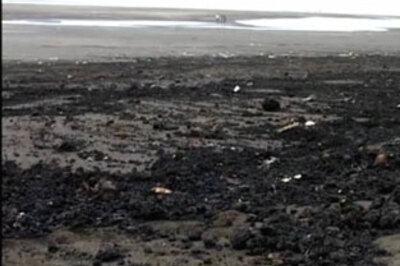
views
The first fatal shark attack ever recorded in the U.S. state of Maine this week may be linked to rebounding populations of the great white shark and its prey the seal, experts said on Wednesday.
Julie Dimperio Holowach, 63, likely died instantaneously when bitten by a great white shark near Harpswell on Monday, officials said. She was brought ashore by kayakers and pronounced dead at the scene.
The largest predator shark species, the great white has been depleted around the world by overfishing, including the possible use of its meat for fish and chips.
But great whites have been protected from fishing under U.S. regulation since 1997 and seals by the 1972 Marine Mammal Protection Act.
“I like to characterize both populations as rebounding from high levels of exploitation,” said Gregory Skomal, a senior fisheries scientist with the Massachusetts Division of Marine Fisheries.
The great white population is estimated to have returned to between 60 and 70 percent of what it should be in the U.S. Northeast, Skomal said, adding that he identified the shark in Monday’s incident as a great white based on a tooth fragment that was recovered from the body.
“The theory of the case is these sharks are returning naturally to a habitat that is coming back into balance,” said John King of the Atlantic White Shark Conservatory.
Shark attacks of any type are rare, with five fatalities worldwide in 2019, but this marked the first fatal attack ever in Maine, according to the International Shark Attack File database.
In response to the incident, Maine officials restricted swimmers to waist-deep water at 10 state parks until further notice, as sharks typically avoid shallow water. Lifeguards were on duty and extra staff were assigned to search for sharks, the Maine Department of Agriculture, Conservation and Forestry said.
Experts suspect the shark mistook Dimperio Holowach for a seal as she was wearing a wetsuit. Great whites typically eschew humans for their preferred prey of seals and smaller shark species.
“They’re really big, formidable creatures, but they are predators that are mostly interested in feeding on their natural prey,” said Chris Fallows, a South African shark expert and photographer, speaking from a boat off Mossel Bay that he said was surrounded by great whites.
The great white is under attack around the globe, particularly in the Southern Hemisphere hotspots around southern Africa and Oceania.
“Really the only population that has shown any sort of increase is in the Northeast of the U.S. and that is probably a result of seals being seen more frequently in that area,” Fallows said.
Scientists with the Shark Lab at California State University Long Beach are using drones and other technology to study great white sharks along the coast of Southern California, trying to determine what environmental factors might bring them closer to humans. [nL2N2F011N]
Disclaimer: This post has been auto-published from an agency feed without any modifications to the text and has not been reviewed by an editor




















Comments
0 comment